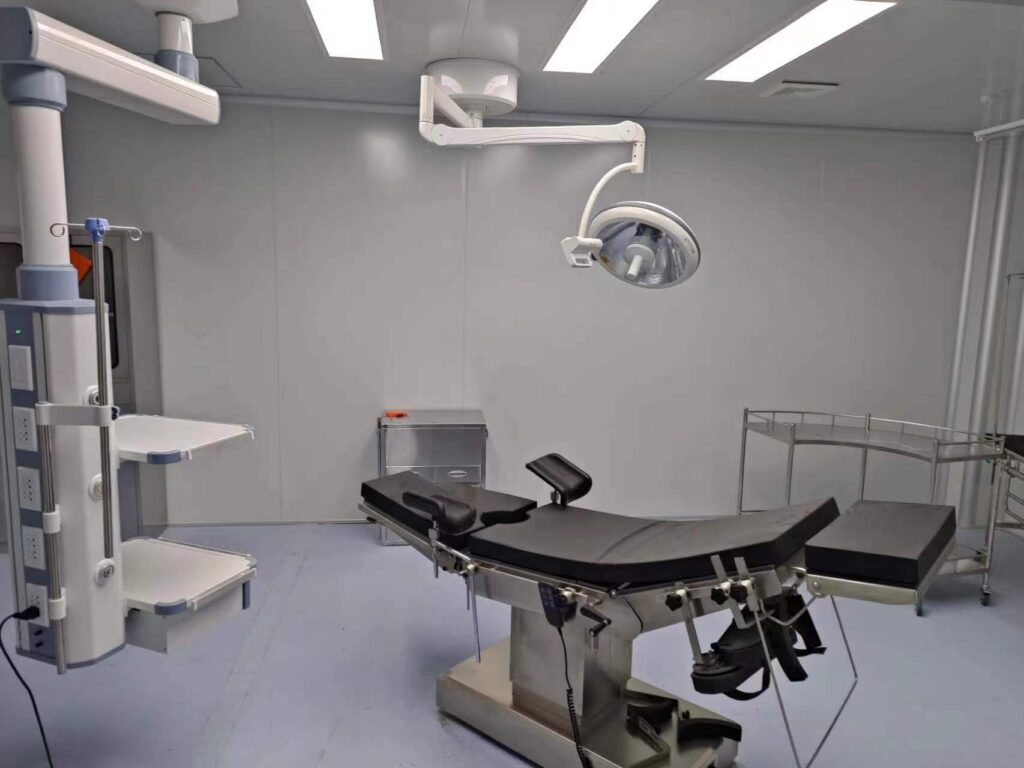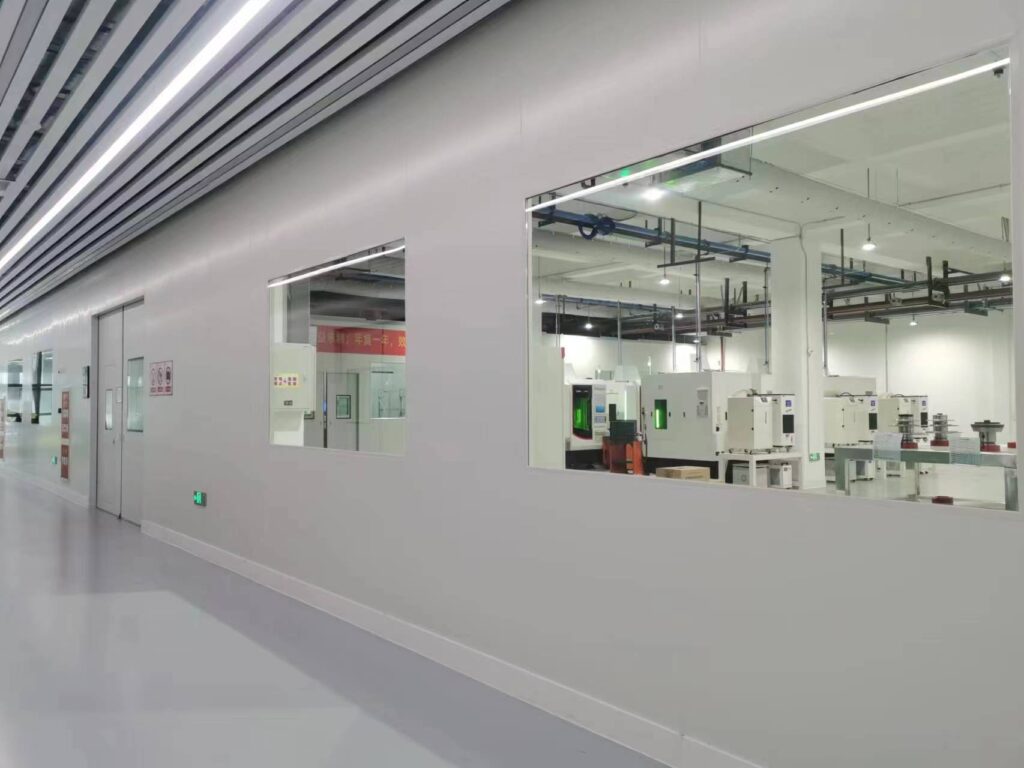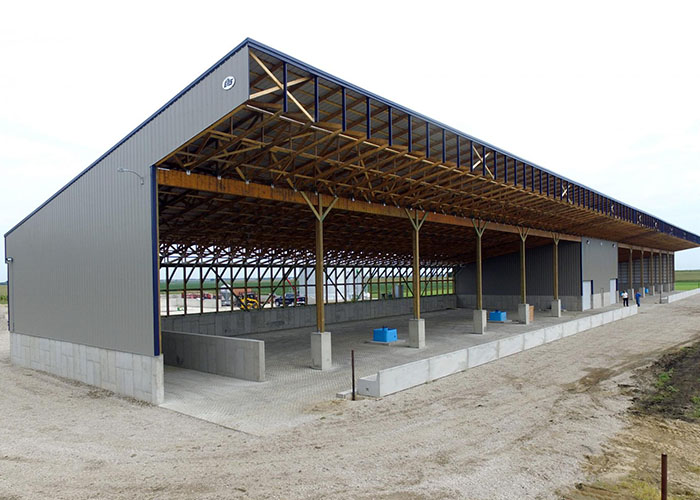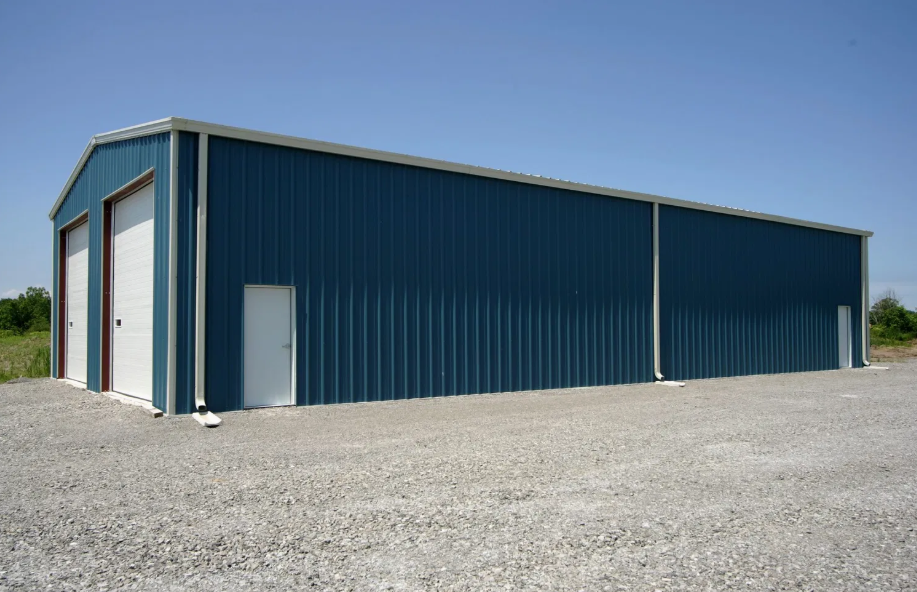Exploring what is an EPS panel

Exploring what is an EPS panel (wall panel) reveals a lightweight, rigid foam board crafted from expanded polystyrene beads fused together. This innovative material offers exceptional thermal insulation and structural versatility, making it a cornerstone in modern construction. In this article, we’ll dive into the definition, manufacturing, key features, and diverse applications that make EPS panels indispensable.
Understanding what is EPS panel construction
From understanding the engineering behind EPS panel construction to uncovering installation best practices and maintenance tips, this comprehensive guide highlights why EPS panels outperform traditional materials in energy efficiency, durability, and cost-effectiveness. Discover how EPS panels are revolutionizing building envelopes, cold storage, modular homes, and beyond with their unique properties and sustainability benefits.
Definition and Basic Composition of EPS Panels

When addressing what is an EPS panel, it is essential to understand that EPS stands for Expanded Polystyrene. EPS panels are rigid, closed-cell foam boards primarily made from polystyrene beads that have been expanded and fused together. This material is widely used in the construction industry for its lightweight nature, insulation properties, and structural versatility.
What are EPS panels in technical terms? They consist of approximately 98% air trapped within tiny voids, which significantly contributes to their excellent thermal insulation and low density. The typical composition involves small spherical beads of polystyrene that are expanded through steam heating and then molded into panels of varying thicknesses and densities.
Basic Composition
| Component | Description |
|---|---|
| Polystyrene Beads | Raw material, expandable thermoplastic resin beads |
| Air | Approximately 98% of volume, trapped within beads making it lightweight and insulating |
| Binder | Used to fuse beads during molding to form a rigid panel |
The terminology around EPS panels can vary depending on specific applications. For instance, what is EPS sandwich panel refers to a type of panel where an EPS core is sandwiched between two facings, often made from metal or other rigid materials, enhancing load-bearing capacity and protective qualities. Similarly, what is EPS wall panels describes panels used specifically for exterior or interior wall construction, providing both insulation and structural support.
Understanding EPS Panel Terminology in Construction
For anyone exploring what is EPS panel construction, it pertains to building methodologies utilizing EPS panels for walls, roofs, or floors, leveraging their excellent insulation and lightweight characteristics. What is EPS panelling broadly refers to the technique of installing these panels across various construction surfaces to optimize thermal performance and ease of installation.
In summary, what is EPS wall panel refers to specific use-cases of EPS panels designed to deliver optimized insulation and moisture resistance in building envelopes.
Manufacturing Process of EPS Panels
Understanding what is an EPS panel begins with examining its manufacturing process, which is crucial to its performance and application versatility. EPS panels, or Expanded Polystyrene panels, are composed primarily of expanded polystyrene beads that are molded and fused to form rigid, lightweight panels widely used in construction.
Raw Material Preparation
The process starts with raw beads of polystyrene resin. These beads are impregnated with a blowing agent, typically pentane, which facilitates expansion. The initial step involves pre-expanding the beads by exposing them to steam at controlled temperatures. This causes the beads to soften and expand significantly, increasing their volume by up to 40 times.
Conditioning Stage
After pre-expansion, the beads enter a conditioning phase where they are allowed to stabilize and cool down. This resting period ensures the beads reach uniform density and responsible moisture content before molding. Proper conditioning is essential for maintaining consistent panel quality.
Molding and Expansion
The pre-expanded beads are then transferred into molds shaped according to the final panel dimensions and design requirements. Inside the mold, steam is again introduced, causing the beads to further expand and fuse together without requiring any adhesives. This fusion process creates a rigid, homogeneous structure that defines what is EPS sandwich panel or what is EPS wall panel construction.
Curing and Cooling
Once molded, the panels undergo a curing process where steam injection is stopped, and the panels are allowed to cool inside the mold. This cooling solidifies the panel’s structure and ensures dimensional stability. Proper curing directly influences the mechanical strength and thermal performance of the panels.
Cutting and Finishing
After cooling, the EPS panels are removed from the molds and cut into precise sizes and shapes depending on the application requirements. Advanced cutting techniques using hot wire or CNC machines deliver clean edges and customizable designs. At this stage, surface treatments or facings may be applied, which is a common step in the production of EPS sandwich panel systems to improve fire resistance and durability.
Quality Control
Throughout the manufacturing process, stringent quality control measures are applied to verify panel density, dimensional accuracy, and physical properties. These testing protocols ensure that each panel meets industry standards and performance expectations, which answer critical aspects of what does EPS panel stand for in professional construction contexts.
This comprehensive manufacturing process is fundamental to understanding what is EPS panel construction and highlights the engineered precision behind what is EPS panelling and its role across various applications.
Key Features and Physical Properties of EPS Panels

What is an EPS panel? It is essential to understand its intrinsic qualities to appreciate its widespread use in modern construction. EPS stands for Expanded Polystyrene, a lightweight, rigid, and closed-cell foam material primarily composed of 98% air and 2% polystyrene polymer. This composition imparts several unique physical properties and features that make EPS panels valuable in construction applications.
Lightweight and Structural Strength
One of the foremost characteristics of EPS panels is their exceptionally low density, which typically ranges from 10 to 30 kg/m³, depending on the panel grade. Despite being lightweight, these panels display considerable compressive strength, allowing them to serve as core materials in EPS sandwich panels used for insulation and structural purposes.
| Property | Typical Range | Unit |
|---|---|---|
| Density | 10 – 30 | kg/m³ |
| Compressive Strength | 100 – 250 | kPa (kilopascals) |
| Thermal Conductivity | 0.032 – 0.038 | W/m·K |
| Water Absorption | Less than 4% | by volume |
| Fire Classification | Typically Class E (EN 13501-1) | – |
Thermal Insulation Properties
EPS panels are well-regarded for their excellent thermal insulation capabilities. The low thermal conductivity values reflect the material’s ability to resist heat flow efficiently, making EPS wall panels ideal for reducing energy consumption in heating and cooling within buildings. This property is a key factor in answering the question of what is EPS panel construction that promotes energy efficiency.
Moisture Resistance and Water Absorption
Due to their closed-cell structure, EPS panels exhibit low moisture absorption rates, generally less than 4% by volume. This attribute helps in maintaining insulation performance even in humid environments. However, it is important to distinguish EPS wall panels from other materials prone to water retention. Proper installation and protective coatings are recommended to further enhance moisture resistance.
Fire Resistance and Safety Considerations
While EPS panelling provides excellent insulation, it is combustible and typically requires fire retardant additives or protective facings when used in building envelopes. Standard fire classification for EPS materials is generally Class E, though achieving higher fire ratings is possible through specialized treatments or panel assemblies. For EPS sandwich panels, the outer layers often serve as barriers to improve overall fire resistance.
Dimensional Stability and Durability
The dimensional stability of EPS panels under normal service conditions stands out. They resist shrinkage and deformation over time, which is essential in preserving the integrity of walls and roof assemblies where they are employed., the mechanical properties enable the panels to withstand handling and impact during transportation and installation without significant damage.
Acoustic Properties
Beyond thermal benefits, EPS wall panels offer moderate sound insulation qualities. The cellular structure helps absorb and dampen sound waves, making these panels beneficial in applications requiring noise reduction alongside thermal control.
Common Applications and Uses of EPS Panels in Construction
What is an EPS panel and why is it widely used across various construction domains? EPS panels, also known as expanded polystyrene panels, serve as an integral component in modern building systems due to their versatility, lightweight nature, and excellent insulation properties. Understanding what EPS panels are used for provides insight into their critical role in both residential and commercial construction projects.
Residential and Commercial Building Envelopes



EPS wall panels are extensively utilized in creating effective building envelopes. Their excellent thermal insulation properties make them ideal for exterior walls, roof insulation, and floor insulation, contributing to energy-efficient structures. When integrated within wall systems, EPS sandwich panels, which consist of two outer layers bonded to an EPS core, enhance both structural strength and thermal performance. This dual functionality is especially advantageous in cold and temperate climates, where maintaining interior comfort is paramount.
Pre-fabricated and Modular Construction



The growth of modular building techniques has led to increased reliance on EPS panels. Due to their lightweight and ease of handling, EPS panels simplify transport and onsite assembly, speeding up construction timelines. What does EPS panel stand for in such contexts often involves pre-insulated sandwich panels that form entire wall, roof, or floor sections, ensuring consistent quality and reducing waste. This aspect of EPS panel construction is particularly beneficial in developing affordable and sustainable housing solutions.
Cold Storage and Refrigeration Facilities
A significant application of what is EPS panelling relates to cold storage buildings, where temperature control is critical. The low thermal conductivity of EPS makes it an excellent choice for insulation in cold rooms, walk-in freezers, and refrigerated warehouses. The panels’ moisture resistance and durability also contribute to maintaining performance under demanding conditions, ensuring prolonged energy efficiency.
Soundproofing and Acoustic Applications
Besides thermal benefits, EPS panels are employed in acoustic insulation. Their cellular structure helps absorb and dampen sound waves, making them suitable for use in studios, auditoriums, and urban residential buildings aimed at noise reduction. In these cases, what is EPS panels can do extends beyond thermal insulation to improving occupant comfort through sound control.
Structural Insulated Panels (SIPs)
EPS sandwich panel technology forms the basis for Structural Insulated Panels (SIPs), which serve as load-bearing elements in walls, roofs, and floors. SIPs incorporate EPS cores between structural facings such as oriented strand board (OSB). Their use results in strong, thermally efficient panels that reduce the need for traditional framing materials and thus accelerate the construction process.
Decorative and Architectural Facades
What is EPS wall panel usage beyond insulation? EPS panels are often used under exterior finishing systems as substrates for cladding and decorative facades. Their ability to be easily cut and shaped allows for complex design implementations, supporting both aesthetic appeal and functional performance of building exteriors.
Advantages of Using EPS Panels Over Traditional Materials

Understanding what is an EPS panel helps in appreciating its significant benefits compared to conventional construction materials like wood, concrete, or metal. EPS panels, including EPS sandwich panels and EPS wall panels, offer a combination of lightweight properties, thermal performance, and ease of installation that traditional materials often lack.
Lightweight Yet Strong Structure
What is EPS panel construction known for largely revolves around its remarkable strength-to-weight ratio. EPS (Expanded Polystyrene) cores enclosed between rigid facings produce panels that are significantly lighter than traditional masonry or concrete elements while maintaining structural stability. This reduces the overall load on building foundations and accelerates the construction process.
| Material | Density (kg/m3) | Typical Weight per Panel (kg) |
|---|---|---|
| EPS Panels | 15-30 | Low (depends on size) |
| Concrete Panels | 2200-2400 | High |
| Wood Panels | 500-700 | Moderate |
Superior Thermal Insulation and Energy Efficiency
One of the most recognized advantages when considering what does EPS panel stand for is its outstanding insulation capability. The closed-cell structure of EPS provides excellent resistance to heat flow, which translates into lower heating and cooling costs. This is a crucial factor behind the widespread use of EPS wall panels in energy-conscious building designs.
| Panel Type | R-value (m²·K/W) | Energy Efficiency |
|---|---|---|
| EPS Panels | 3.6 – 4.2 per inch | High |
| Traditional Brick Wall | 0.44 – 0.66 per inch | Low |
| Concrete Block | 0.08 – 0.11 per inch | Low |
Ease and Speed of Installation
Exploring what is EPS panelling reveals that its prefabricated nature allows for straightforward and rapid installation. Unlike traditional materials that often require complex onsite modifications or curing times (such as concrete), EPS panels can be quickly positioned and affixed, reducing labor costs and project timelines substantially.
- Lightweight contributing to easier handling
- Standardized panel sizes promoting modular construction
- Minimal need for specialized tools
Durability and Resistance
When asking what is EPS panel, it’s important to note their inherent resistance to moisture, mold, and pests compared to natural materials like wood. This ensures longer service life and reduced maintenance, particularly in demanding environments such as humid or coastal areas.
| Property | EPS Panels | Traditional Materials |
|---|---|---|
| Moisture Resistance | High | Moderate to Low |
| Pest Resistance | Excellent | Variable |
| Mold Growth Potential | Low | Moderate to High |
Cost-Effectiveness and Sustainability
Beyond performance advantages, understanding what are EPS panels includes appreciation for their economic efficiency and environmental impact. EPS panels typically result in reduced overall project expenses through lower transportation costs (due to light weight), decreased labor requirements, and long-term energy savings. Additionally, many EPS products can be recycled, contributing to sustainable construction practices.
- Reduced lifecycle costs thanks to insulation and durability
- Lower transportation emissions facilitated by lightweight design
- Compatibility with recycling programs for sustainable disposal
Insulation and Energy Efficiency Benefits of EPS Panels
Thermal Insulation Properties of EPS Panels
What is an EPS panel often begins with understanding its core function: thermal insulation. EPS, or Expanded Polystyrene, is renowned for its excellent thermal resistance due to its closed-cell structure that traps air, significantly reducing heat transfer. This characteristic makes EPS panels an ideal solution for maintaining consistent indoor temperatures, thus enhancing energy conservation in buildings. The low thermal conductivity of EPS material minimizes heat loss during winter and heat gain during summer, directly contributing to reduced energy consumption for heating and cooling systems.
Energy Efficiency Implications in Building Applications
Integrating EPS sandwich panels or EPS wall panels into the building envelope substantially improves the overall energy efficiency of the structure. By offering superior insulation, these panels help meet stringent energy codes and sustainability standards while providing long-term cost savings. What is EPS panel construction really excels at is creating continuous insulation with minimal thermal bridging, which conventional insulation methods often struggle to achieve. This continuity enhances the building’s thermal envelope, promoting energy-efficient design strategies.
Reducing Carbon Footprint and Environmental Impact
Beyond energy savings, what does EPS panel stand for extends to environmental benefits. EPS panels contribute to a reduced carbon footprint by lowering the energy demand for heating and cooling, which in turn decreases greenhouse gas emissions associated with fossil fuel consumption. Additionally, many EPS panels are recyclable and made from materials that can be reused, aligning with sustainable construction practices and circular economy goals.
Moisture Resistance and Its Role in Energy Efficiency
Another factor contributing to the energy efficiency of EPS panelling is its inherent resistance to moisture absorption. Unlike materials that can degrade insulation effectiveness when wet, EPS panels maintain their insulating properties even in humid or wet conditions. This moisture resistance prevents energy loss caused by damp insulation and supports the durability of the building envelope over time.
Versatility in Insulation Performance
Whether deployed as EPS wall panel systems or part of a broader roofing strategy, these panels provide versatile insulation solutions tailored to diverse climate conditions and design requirements. Their adaptability allows architects and builders to optimize thermal performance in both new constructions and retrofits, maximizing comfort and energy savings year-round.
Installation Techniques and Best Practices for EPS Panels
Understanding what is an EPS panel is essential to grasp the installation nuances that ensure optimal performance in construction applications. EPS panels, including EPS sandwich panels and EPS wall panels, require specific handling and installation methods to maximize their insulation properties and structural integrity.
Preparation and Site Assessment
Before installation, it is crucial to conduct a thorough site assessment to confirm that the substrate is clean, level, and dry. This preparation is fundamental when working with EPS wall panels to ensure proper adhesion or mechanical fastening. Identifying potential moisture sources or uneven surfaces beforehand prevents future issues such as delamination or reduced insulation efficiency.
Handling and Protection of EPS Panels
Due to the lightweight and porous nature of EPS material, handling must be done carefully to avoid damage. What does EPS panel stand for—Expanded Polystyrene—also indicates its vulnerability to physical impacts and solvents. It is advised to store panels off the ground, protected from direct sunlight and weather, until installation to preserve their mechanical and thermal properties.
Installation Methods
| Installation Method | Description | Applicable EPS Panel Types | Key Considerations |
|---|---|---|---|
| Mechanical Fastening | Panels are secured using screws, anchors, or plates. | EPS sandwich panel, EPS wall panels | Ensure fasteners do not compress EPS excessively; use washers to distribute load. |
| Adhesive Bonding | Construction adhesives specifically designed for EPS are applied to bond panels to substrates. | EPS wall panels, EPS panelling | Substrate must be clean and cured; adhesive compatibility with EPS must be verified. |
| Combination Method | Uses both mechanical fastening and adhesive to enhance stability. | EPS sandwich panel | Recommended for high-wind or seismic regions where enhanced structural integrity is necessary. |
Joint Treatment and Sealing
Proper treatment of panel joints is critical in what is EPS panel construction to achieve air-tightness and prevent thermal bridging. Joints should be filled with compatible sealants or compressible tapes designed for EPS applications. This practice minimizes moisture ingress and enhances overall energy efficiency.
Thermal Expansion Considerations
What is EPS panelling must take into account thermal expansion and contraction. Sufficient spacing—typically 3 to 5 mm—between panels should be maintained during installation to allow for movement without damage. Expansion joints are also recommended in larger surface areas to mitigate stress on the panels.
Finishing and Surface Protection
Once installed, what is EPS wall panel systems often require protective finishes such as plaster, paint, or cladding materials. These finishes not only contribute to aesthetic appeal but protect EPS panels from ultraviolet degradation and mechanical abrasion.
Maintenance and Durability Considerations for EPS Panels
Understanding Durability of EPS Panels
What is an EPS panel extends beyond its basic composition to its long-term performance in various construction environments. EPS (Expanded Polystyrene) panels are engineered to offer durability due to their closed-cell structure, which provides resistance to moisture absorption, decay, and environmental degradation. However, the lifespan and integrity of EPS panels depend significantly on appropriate maintenance practices aligned with their physical properties.
Common Factors Affecting Durability
Several external and internal factors influence the durability of EPS sandwich panels and EPS wall panels. These include UV exposure, mechanical impact, chemical exposure, and moisture infiltration. While EPS material itself is water-resistant, the integrity of protective facings and joints must be regularly checked to prevent damage that could compromise the panel’s insulation properties.
| Factor | Effect on EPS Panels | Maintenance Recommendation |
|---|---|---|
| UV Exposure | Can degrade outer facings causing brittleness | Use UV-resistant coatings; inspect and recoat periodically |
| Mechanical Impact | May cause dents or cracks reducing insulation efficiency | Prevent impacts using protective barriers; repair damages promptly |
| Chemical Exposure | Certain solvents and acids can damage EPS material | Avoid exposure; use chemical-resistant facings where necessary |
| Moisture Infiltration | Can affect joints and facings, leading to mold or structural issues | Ensure proper sealing and inspect joints regularly |
Maintenance Best Practices for EPS Panels
To ensure sustained performance in EPS panel construction, regular inspections must focus on seal integrity, surface condition, and attachment points. It is essential to perform routine cleaning using non-abrasive methods to maintain surface appearance and prevent biological growth. In the case of EPS wall panel systems, particular attention should be given to transitions and penetrations to avoid water ingress.
Repair and Replacement Guidelines
When assessing what are EPS panels for damage, minor surface repairs can often be completed on-site using compatible fillers and sealants designed for polystyrene. For significant structural issues such as delamination, core damage, or persistent moisture problems, partial or full panel replacement is recommended to preserve insulation performance and structural stability.
Summary Table: Maintenance Checklist for EPS Panels
| Maintenance Task | Frequency | Purpose |
|---|---|---|
| Visual inspection of panel facings and edges | Biannually | Identify mechanical or environmental damage |
| Check and reseal joints and penetrations | Annually | Prevent moisture infiltration |
| Clean surfaces with mild detergent and water | Annually or as needed | Remove dirt, mold, and mildew |
| Apply UV protective coatings | Every 3–5 years | Extend lifespan of outer facings |
| Repair minor damage promptly | As needed | Maintain structural and insulation integrity |
In conclusion, understanding what does EPS panel stand for involves recognizing its maintenance requirements to achieve maximum durability. By adhering to these guidelines, what is EPS panelling can deliver efficient insulation and structural performance for decades in a wide range of construction applications.
